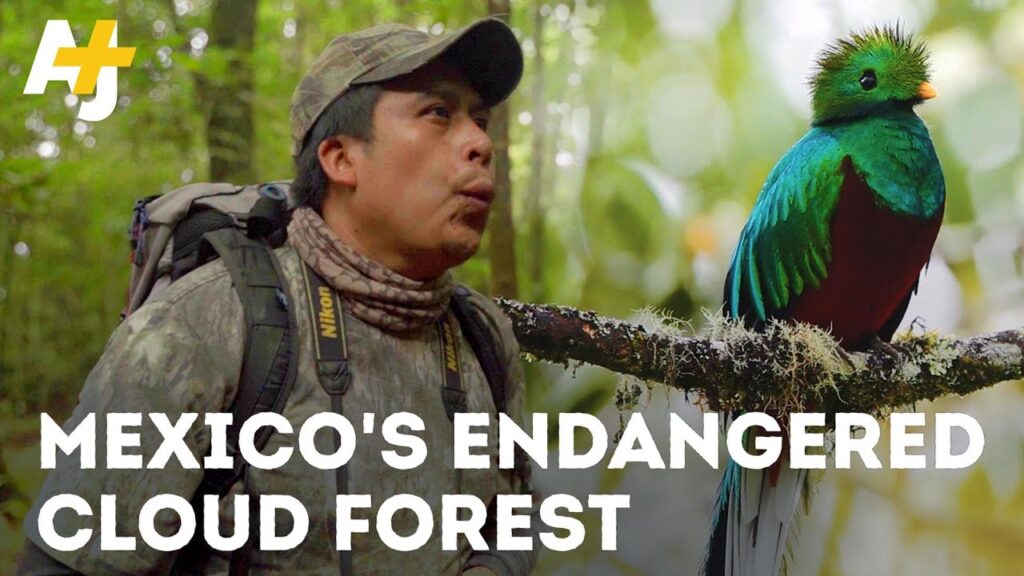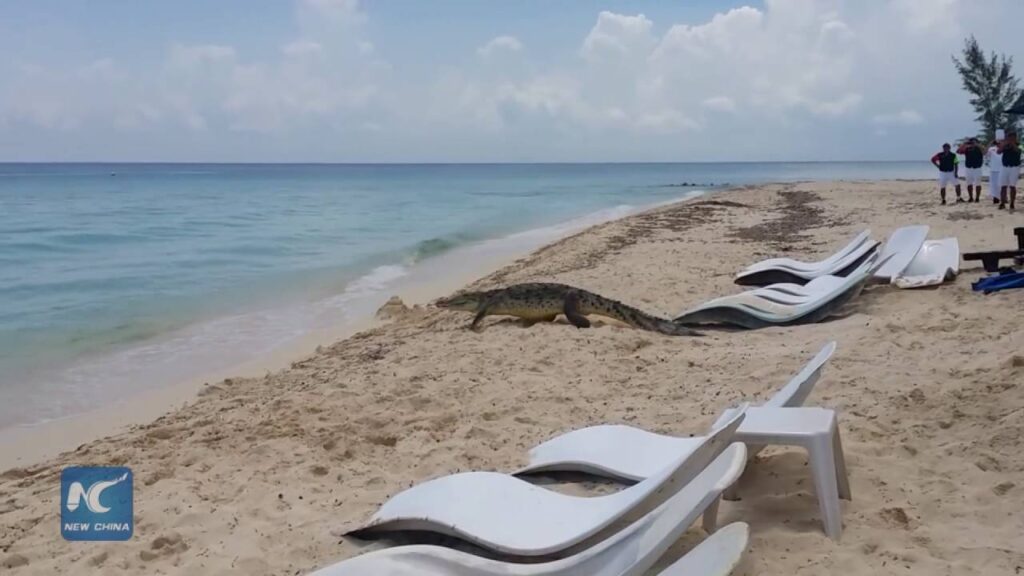The Vital Role of Xilitla’s Cloud Forest in Biodiversity Conservation
Nestled in the heart of the Huasteca Potosina region, Xilitla stands as a testament to the incredible natural wealth of Mexico. Its cloud forest, a rarity in the northern hemisphere, serves as one of the most captivating examples of biodiversity in the country. The perpetual mist enveloping this high-altitude woodland creates a unique ecosystem where a multitude of species thrive. The lush, verdant landscapes of the Xilitla cloud forest are not just visually breathtaking; they play a crucial role in maintaining the ecological balance of the region.
In Xilitla, the relationship between flora and fauna is delicately interwoven, showcasing the complexity of these ecosystems. The cloud forest is home to over 100 species of orchids, some of which are endemic to the area. Each plant contributes to the dense tapestry that supports a variety of animals, from vividly colored birds to stealthy mammals. This level of species richness underlines the forest’s significance as a reservoir of genetic diversity, which is indispensable for the resilience of local and global ecosystems.
Notably, Xilitla’s cloud forest serves as a vital habitat for numerous bird species, including both resident and migratory populations. The area is recognized as an Important Bird and Biodiversity Area (IBA) by BirdLife International, which emphasizes its importance for avian conservation. Endangered species such as the Military Macaw (Ara militaris) and the Bearded Wood-Partridge (Dendrortyx barbatus) find sanctuary amid the forest’s dense canopy, which offers food, shelter, and breeding grounds.
The role of Xilitla’s cloud forest in water regulation cannot be understated. These forests are excellent at capturing moisture from the cloud cover, a process that replenishes groundwater and ensures a continuous water supply for downstream ecosystems. This natural service is invaluable, not only for wildlife but also for human communities that depend on these water resources for their livelihoods. The conservation of the Xilitla cloud forest is, therefore, a matter of environmental sustainability and socioeconomic stability.
Despite its significance, Xilitla’s cloud forest faces threats from deforestation, agricultural expansion, and climate change. As these issues become increasingly pressing, conservation efforts to protect this irreplaceable bastion of biodiversity are more important than ever. Through sustainable tourism, education, and preservation initiatives, we can help safeguard the future of the Xilitla cloud forest and the vast array of life that relies on its existence. The ongoing efforts to conserve this magical place highlight the interconnectedness of life and the responsibility we all share in protecting our planet’s natural wonders.
How the Deforestation of Xilitla’s Cloud Forest Affects Local Communities
The lush cloud forests of Xilitla, located in the state of San Luis Potosí, are facing a crisis that reverberates through the local communities. Deforestation, driven by logging and the expansion of agricultural lands, is not only stripping away the area’s natural beauty but also the resources that sustain the indigenous people living there. As trees disappear, so does the cultural and economic fabric that has long been woven around them.
One of the most immediate impacts of deforestation is the loss of biodiversity. Xilitla’s cloud forest is home to an array of species that depend on this unique ecosystem to survive. When their habitat is destroyed, these creatures, many of which are endemic and cannot be found anywhere else in the world, face the threat of extinction. The local communities, who have developed extensive knowledge about the flora and fauna, suffer the loss of these natural resources which are integral to their traditions and livelihoods.
Furthermore, the deforestation of Xilitla’s cloud forest affects the water cycle extensively. These forests are known to be crucial water catchment areas. Trees play an essential role in the filtration and distribution of the region’s water supply. Without them, water becomes scarce, not only jeopardizing agriculture but also the basic needs of the local populace. Inadequate water supply can lead to a host of social and health issues that disproportionately impact the most vulnerable members of these communities.
Economically, the deforestation can be devastating. Many locals rely on eco-tourism and the sustainable harvesting of forest products for their income. As the trees fall, so do the opportunities for employment and economic growth. Deforestation also means the loss of potential medicinal plants that could be vital for both local and global health advancements, representing a profound economic and scientific detriment.
Lastly, the cultural impact of deforestation on the communities around Xilitla cannot be overstated. Indigenous groups have lived in harmony with their environment for centuries, developing customs and narratives deeply connected to the forest. The loss of their natural environment can lead to a loss of identity, as traditional knowledge, language, and rituals are closely tied to the land and its species. The intangible heritage, once lost, is nearly impossible to restore.
The Unique Climate of Xilitla’s Cloud Forest and Its Global Significance
Tucked away in the lush central highlands of Mexico is the magical realm of Xilitla, home to one of the world’s most enchanting cloud forests. The area is characterized by a unique climate, where warm air from the Gulf of Mexico meets the cooler mountain air, precipitating constant moisture in the form of mist or light rain. This distinct atmospheric condition creates an environment of perpetual dampness, nurturing an incredibly diverse ecosystem. Xilitla’s cloud forest thrives with rich vegetation, including myriad species of mosses, ferns, and orchids that cling to the trunks and branches of towering trees, giving the landscape a surreal and otherworldly appearance.
This unique microclimate also has profound implications for biodiversity. Xilitla’s cloud forest is a biodiversity hotspot, providing vital habitat for countless endemic species. It is renowned for the dizzying array of birds that splash color through the mist, including the elusive quetzal, and a variety of other species that contribute to its designation as an Important Bird and Biodiversity Area (IBA). The area is also home to a plethora of amphibians and insects, many of which are found nowhere else on earth, making its conservation a global priority. Scientists from across the world study this living laboratory to understand the complexities of species interaction and ecosystem dynamics in delicate environments like these.
Beyond its ecological treasures, Xilitla’s cloud forest plays an essential role in global climate regulation. The dense foliage acts as a significant carbon sink, absorbing carbon dioxide and helping to mitigate the effects of global warming. The presence of these forests also helps in the regulation of the local watershed, ensuring clean and stable water sources for both ecological and human needs. As deforestation and climate change threaten similar environments worldwide, Xilitla stands as a beacon of natural beauty and ecological importance. Its preservation is critical in the fight against climate change, underlining the need for greater environmental awareness to ensure such wonders continue to flourish for generations to come.
Ecotourism in Xilitla: Why Preserving the Cloud Forest is Essential for the Economy
Located in the heart of the Huasteca Potosina, Xilitla is a magnet for ecotourism enthusiasts drawn to its unique cloud forest environment. This lush, verdant landscape is a haven for a diverse array of flora and fauna, many of which are endemic to the region. But Xilitla is not just a natural wonder; it’s a critical component of the local economy. The conservation of this vibrant ecosystem is vital for sustaining tourism, which serves as a lifeline for the area’s inhabitants.
Ecotourism in Xilitla offers a sustainable alternative to traditional tourism, which often leads to environmental degradation. By focusing on responsible travel practices, visitors can enjoy the exquisite beauty of the cloud forest without harming it. This form of tourism creates jobs for local guides, accommodations in eco-friendly lodges, and opportunities for small business owners. All this economic activity is deeply intertwined with the health and vitality of the cloud forest itself.
One of the most iconic attractions in Xilitla is the Las Pozas garden, created by the eccentric artist Edward James. This surrealistic garden blends art with natural landscapes, drawing visitors from around the world. The influx of tourists eager to explore James’ creation and the surrounding natural beauty emphasizes the need for eco-conscious travel practices. Preserving Las Pozas and the greater cloud forest is not only a cultural imperative but also an economic necessity.
The cloud forest in Xilitla is also home to critical watersheds that support agriculture, another cornerstone of the local economy. Protecting these delicate ecosystems ensures that water remains plentiful and clean for farming. Furthermore, the forest acts as a natural carbon sink, mitigating climate change and fostering a balanced environment essential for both nature and human activities. The link between ecological preservation and economic stability in Xilitla cannot be overstated.
Finally, the inherent value of Xilitla’s cloud forest extends beyond immediate economic benefits. It is a source of inspiration and education for both locals and visitors. Schools and conservation organizations lead efforts in environmental education, which in turn fosters a sense of stewardship among the community. This educational aspect is crucial for the long-term preservation of the forest and the continued success of ecotourism in the region. As such, protecting Xilitla’s cloud forest is not just an investment in the present economy but also a commitment to future generations.
Protecting Xilitla’s Cloud Forest: The Need for Environmental Education
In the heart of Mexico, the cloud forest of Xilitla stands as a biodiversity haven, teeming with life that is both rare and enchanting. This exceptionally unique ecosystem is home to hundreds of bird species, orchids, and ferns that thrive in the high-altitude mist. Yet, as idyllic as it seems, Xilitla’s cloud forest is under threat. Rapid deforestation, climate change, and unsustainable agricultural practices pose significant risks to this fragile environment.
Environmental education is pivotal in the fight to protect these precious woodlands. By raising awareness about the vital role that the cloud forest plays in maintaining ecological balance, we pave the way for informed conservation strategies. Knowledge is a powerful tool that can empower local communities, stimulate effective policy making, and inspire a new generation of environmental stewards.
Conservation efforts in Xilitla must prioritize the inclusion of local residents and indigenous groups. These communities harbor ancestral knowledge and practices that can inform sustainable forest management. Integrating this traditional wisdom with modern conservation methods enhances the effectiveness of environmental education, creating a robust foundation for the stewardship of the cloud forest.
Highlighting the economic benefits of ecotourism can also play a crucial role in conservation education. Visitors from around the globe flock to Xilitla to experience its awe-inspiring natural beauty. By promoting ecotourism, we not only boost the local economy but also generate revenue that can be reinvested into conservation projects. This creates a positive feedback loop, where conservation fuels tourism, and tourism, in turn, supports conservation efforts.
To ensure the message of conservation is widespread and impactful, environmental education in Xilitla must utilize multiple channels. Schools, community workshops, social media, and local media all serve as powerful platforms to disseminate information and engage the public. Collaborative efforts between governments, NGOs, and the local community to create educational materials and programs can help to forge a collective vision for the future of Xilitla’s cloud forests.



